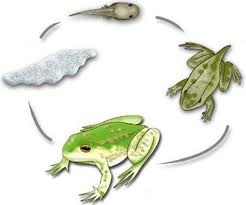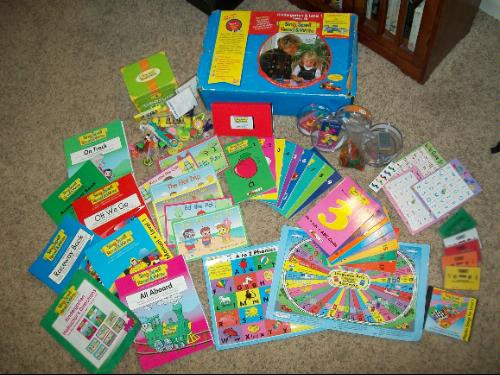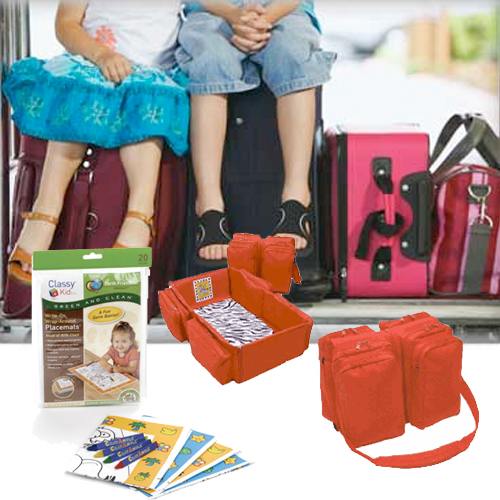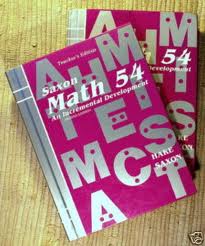
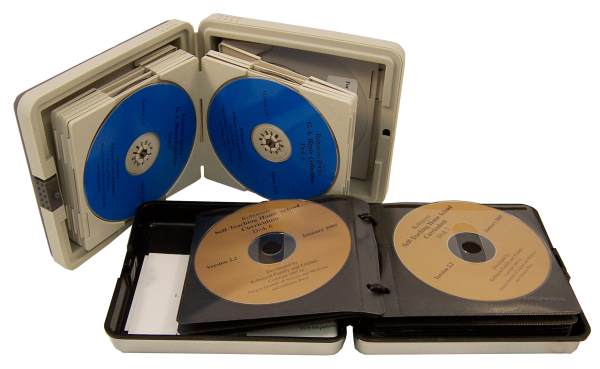
When I first heard about Dr Robinson’s self study homeschooling curriculum, I had to do more research as I did not know much about him or his study method before buying anything for my child to teach. What I found was interesting and inspiring indeed.
 Dr. Robinson is a scientist who works on various aspects of fundamental biochemistry, nutrition, and preventive medicine. He is President and Research Professor of the Oregon Institute of Science and Medicine. His wife Lauralee, who was also a scientist, homeschooled their children until her death in November 1988, when the children were 12, 10, 8, 6, 6, and 16 months. During the past ten years, Dr. Robinson and the children have continued their homeschooling by developing a program entirely based upon self-teaching.
Dr. Robinson is a scientist who works on various aspects of fundamental biochemistry, nutrition, and preventive medicine. He is President and Research Professor of the Oregon Institute of Science and Medicine. His wife Lauralee, who was also a scientist, homeschooled their children until her death in November 1988, when the children were 12, 10, 8, 6, 6, and 16 months. During the past ten years, Dr. Robinson and the children have continued their homeschooling by developing a program entirely based upon self-teaching.
Here is a write up from Robionson site itself saying about his Robinson Self Teaching Homeschooling Curriculum.
From phonics to physics, these 22 CDs and a set of Saxon math books are all that you need to give your children a superior education. You can use this curriculum to supplement your children’s current schooling or as a stand-alone education using the included self-study methods.The Robinson children teach themselves (as do the 60,000 children now using this system) so well that their 11th and 12th grade work is equivalent to high quality 1st and 2nd year university instruction in science, history, literature, and general education.
They also teach themselves study habits that do not depend upon planned workbooks, teacher interaction, and other aids that will not be available later in life.
They teach themselves to think.
Dr. Robinson has spent less than 15 minutes per day teaching all six children… |
Many home schools are limited by the burden of teaching that is placed on parents. Dr. Robinson has spent less than 15 minutes per day teaching all six children ages 6 through 18. Yet, both of his oldest students scored over 1400 on the SAT (over 1500 on the new SAT) and received two years of advanced placement in college. The younger children are doing as well.Teach your children to teach themselves and to acquire superior knowledge as did many of America’s most outstanding citizens in the days before socialism in education.
Give children access to a good study environment and the best books in the English language and then get out of their way! All Curriculum books may be viewed on the computer screen and printed with included software.
This unique curriculum will save you hours of teaching time each day and will give your students an opportunity to develop superior knowledge and life-long study habits.
One caution do not use this curriculum unless you are willing for your children to be academically more learned than you.
Source: Robinsoncurriculum
So what is so special about this course? And why does it make it a good choice for any homeschooler?
There are several keys to learning, one of them that I believe in that a child learns by example, by seeing. I never taught or had class on my child how to stand and walk on two feet. My son did that simply by observing his parents and others around him. Environment has to be right, new positive habits needs to be created with right curriculum and quality books.
This course, says this is the only and one curriculum you will need to teach your kids. I personally think my kids need other stuff as well, but this comes darn close to it as it has vast information and knowledge that kids needs for KG to 12th grade. From phonics to physics, these 22 CDs and a set of Saxon math books are all that you need to give your children a superior education. You can use this curriculum to supplement your children’s current schooling or as a stand-alone education using the included self-study methods. The Robinson children teach themselves (as do the 25,000 children now using this system) so well that their 11th and 12th grade work is equivalent to high quality 1st and 2nd year university instruction in science, history, literature, and general education.
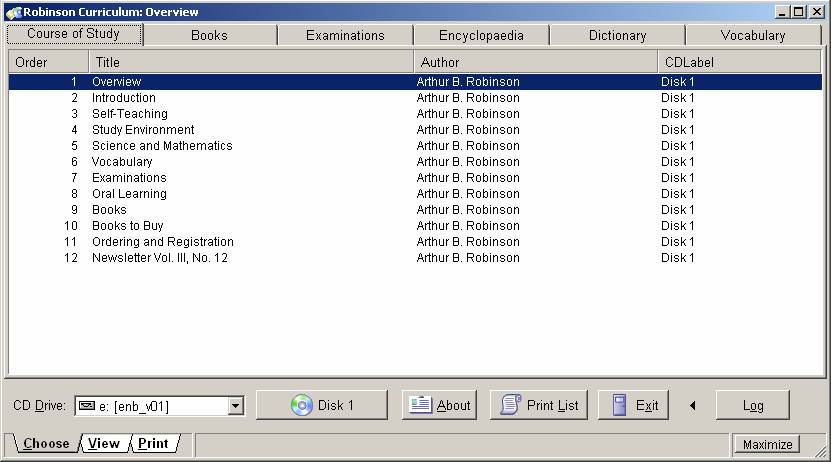
What is Included in the Curriculum?
120,000 Page Library Resource 1911 Encyclopaedia Britannica 1913 Noah Webster’s Dictionary 2,000 Historic Illustrations 6,000 Word Vocabulary Teacher Progress Exams Keyed to Books Outstanding Science Program Very High Academic Quality Proven Methods of Self Study.
- Printable books/materials on CD
- Complete Course of Study
- 12 Years of Education – 22 CDs
- 120,000 Page Library Resource
- 1911 Encyclopaedia Britannica
- 1913 Noah Webster’s Dictionary
- 2,000 Historic Illustrations
- 6,000 Word Vocabulary Teacher
- Progress Exams Keyed to Books
- Outstanding Science Program
- Very High Academic Quality
- Proven Methods of Self Study
- Vocabulary, Phonics, and Math Flash Cards
Here are a few sample of books by some of the best authors included in the curriculum
The Life of George Washington by Josephine Pollard. “The main purpose of the work [is] to give to its young readers a distinct and vivid idea of the exalted character and priceless services of Washington.” Other books by Pollard: Our Hero General Grant, Christopher Columbus and the Discovery of the New World, The Bible for Young People
Original Children’s Classics: Bobbsey Twins (11 volumes); Tom Swift adventures (8 volumes); 26 Horatio Alger volumes; Five Little Peppers and How They Grew; Heidi; Rebecca of Sunnybrook Farms; The Boy Knight: A Tale of the Crusades by G.A. Henty
History: Life of George Washington by Washington Irving; War Between the States by Alexander Stephens; The Rise and Fall of the Confederate Government by Jefferson Davis; The Life of Stonewall Jackson by R.L. Dabney; Picturesque America: A Delineation by Pen and Pencil, 2 volumes edited by William Cullen Bryant
Here is what some of the parents have to say about the Robinson Self Teaching Homeschool Curriculum
She is enjoying learning much more By FR
I can definitely see using this curriculum through high school. I love the Robinson curriculum. We are in our third year of homeschooling, with “older” children who were accustomed to testing and quizzes and spoon-fed material. Math was miserable for the high-schooler and me until this year (we started RC on 8/4/97). She is gaining confidence and is actually enjoying it! My 11-year-old giggled at some of the antiquated phrases (“Oh, pooh!” said one of the Rover boys in book No. 16), but he is learning and developing an interest in history for the first time. I can definitely see us continuing this curriculum through high school for both of them.
He is doing better then Public School: Review by SBB
This is our first year of homeschooling our sixth grader. The Robinson curriculum was recommended by a friend in our church. The ability to work at his own level and speed has made the difference for our son. He is actually doing more work than he did in public school and is enjoying the work. I know it sounds too good to be true, I thought the same thing. But through prayer and a step of faith, I have found that the Lord will be faithful.
Review by – fb in TX
If your children are learning to hate school ….
I was using all of Abeka’s stuff and their day became drudgery. They were not liking school at all and they had no time to read except for snippets of information.
Now they love history, they love math, and they enjoy reading!
When we started they had to get the definitions of the definitions because they were still dumbed down. They still have to live a dictionary but they are having a lot of fun.
I did use the Abeka language book because I needed it to correct their work. I let them use a computer to take advantage of the spell checker and a spelling game. The husband is still addicted to TV but even that is being curtailed over time. So I don’t make an issue of it.
It took about a year to make the transition to using the Robinson Curriculum but wow, what a difference.
How much this curriculum sells for?It is complete 12 years of education Curriculum:
I have seen the best price on Amazon or By Robinson site, which both sells around for $200. I think it is great value since it covers 1-12 grades and covers so much information and it is well worth it. If you order through amazon, you may get free shipping to your home.
All Image Source: Robinson Education Kit and Robinson Product Site


